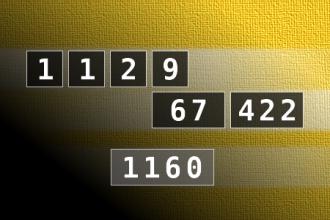Calculate the number 1160
NUMBERMANIA: Calculate the number 1160 using numbers [1, 1, 2, 9, 67, 422] and basic arithmetic operations (+, -, *, /). Each of the numbers can be used only once.Correct answers: 10
The first user who solved this task is Nasrin 24 T.
#brainteasers #math #numbermania

IRS Audit
The owner of a small New York sandwich deli was being questioned by an IRS agent about his tax return. He had reported a net profit of $80,000 for the year.
"Why don't you people leave me alone?" the deli owner said. "I work like a dog, everyone in my family helps out, the place is only closed three days a year. And you want to know how I made $80,000?"
"It's not your income that bothers us," the agent said. "It's these travel deductions. You listed six trips to Florida for you and your wife."
"Oh, that," the owner said smiling. "It is a legitimate business expense because we also deliver."
(For those of you who are not in the United States, the IRS is the Internal Revenue Service. Those are the folks to whom we pay our taxes)
"Why don't you people leave me alone?" the deli owner said. "I work like a dog, everyone in my family helps out, the place is only closed three days a year. And you want to know how I made $80,000?"
"It's not your income that bothers us," the agent said. "It's these travel deductions. You listed six trips to Florida for you and your wife."
"Oh, that," the owner said smiling. "It is a legitimate business expense because we also deliver."
(For those of you who are not in the United States, the IRS is the Internal Revenue Service. Those are the folks to whom we pay our taxes)

